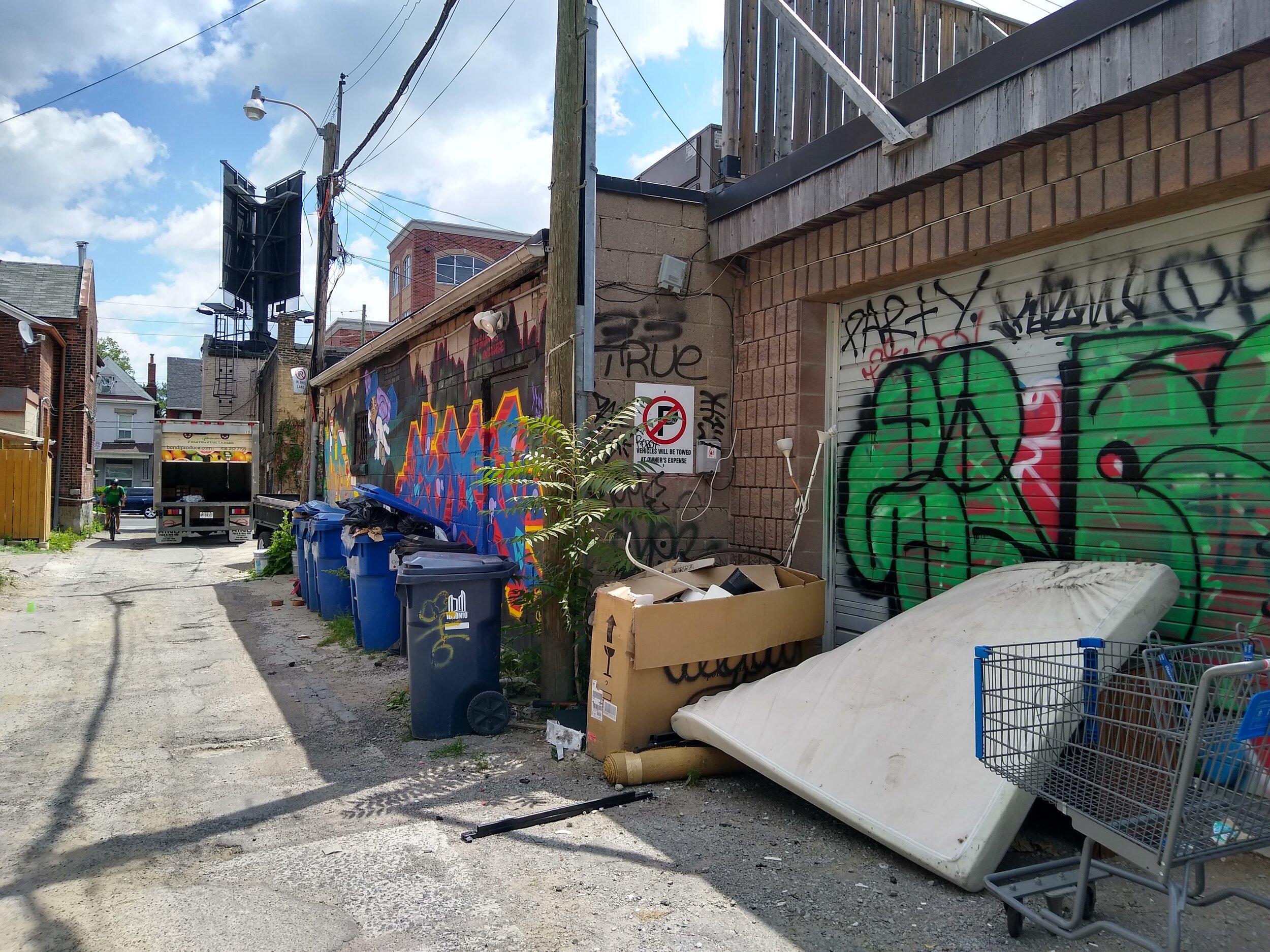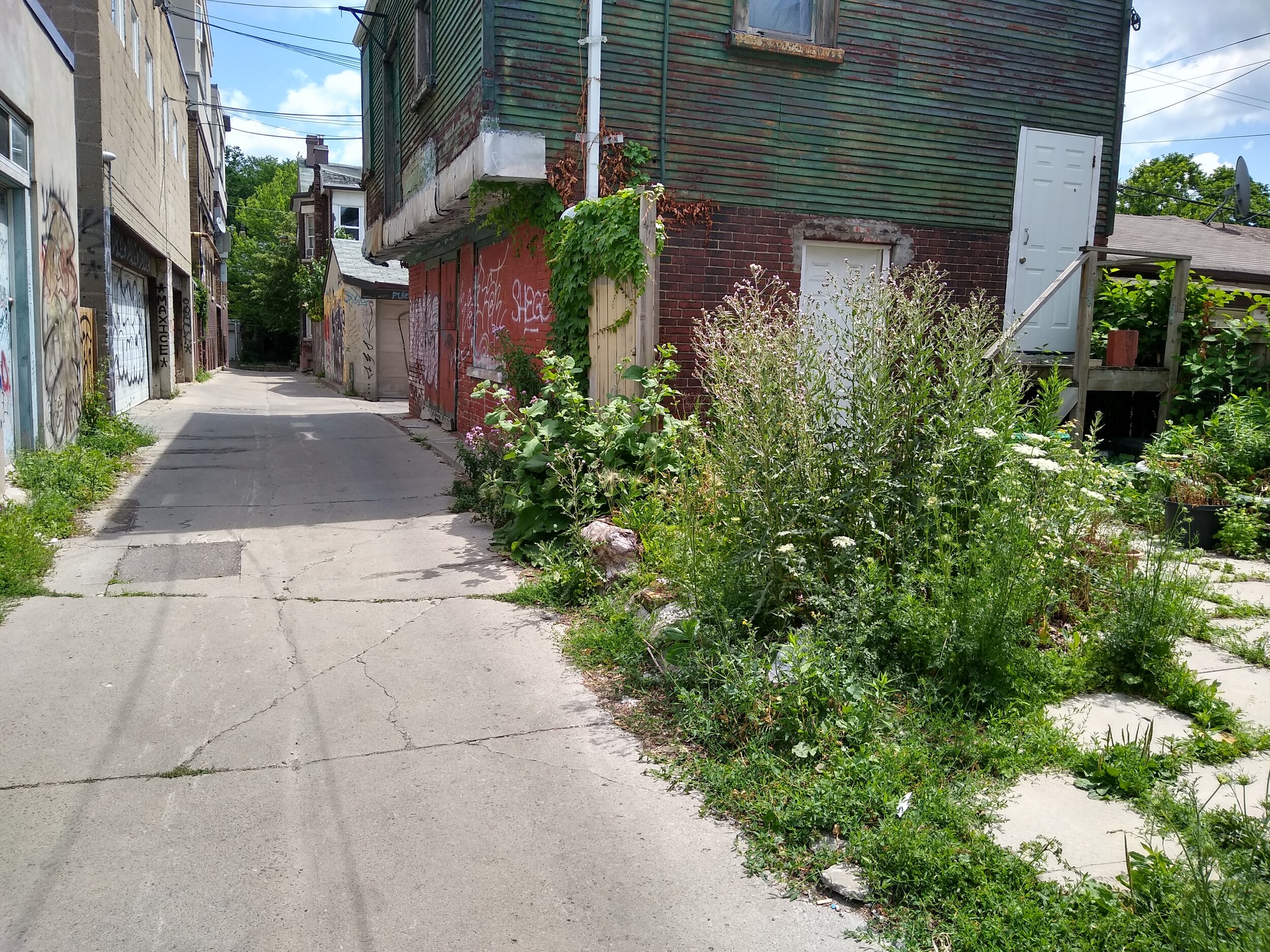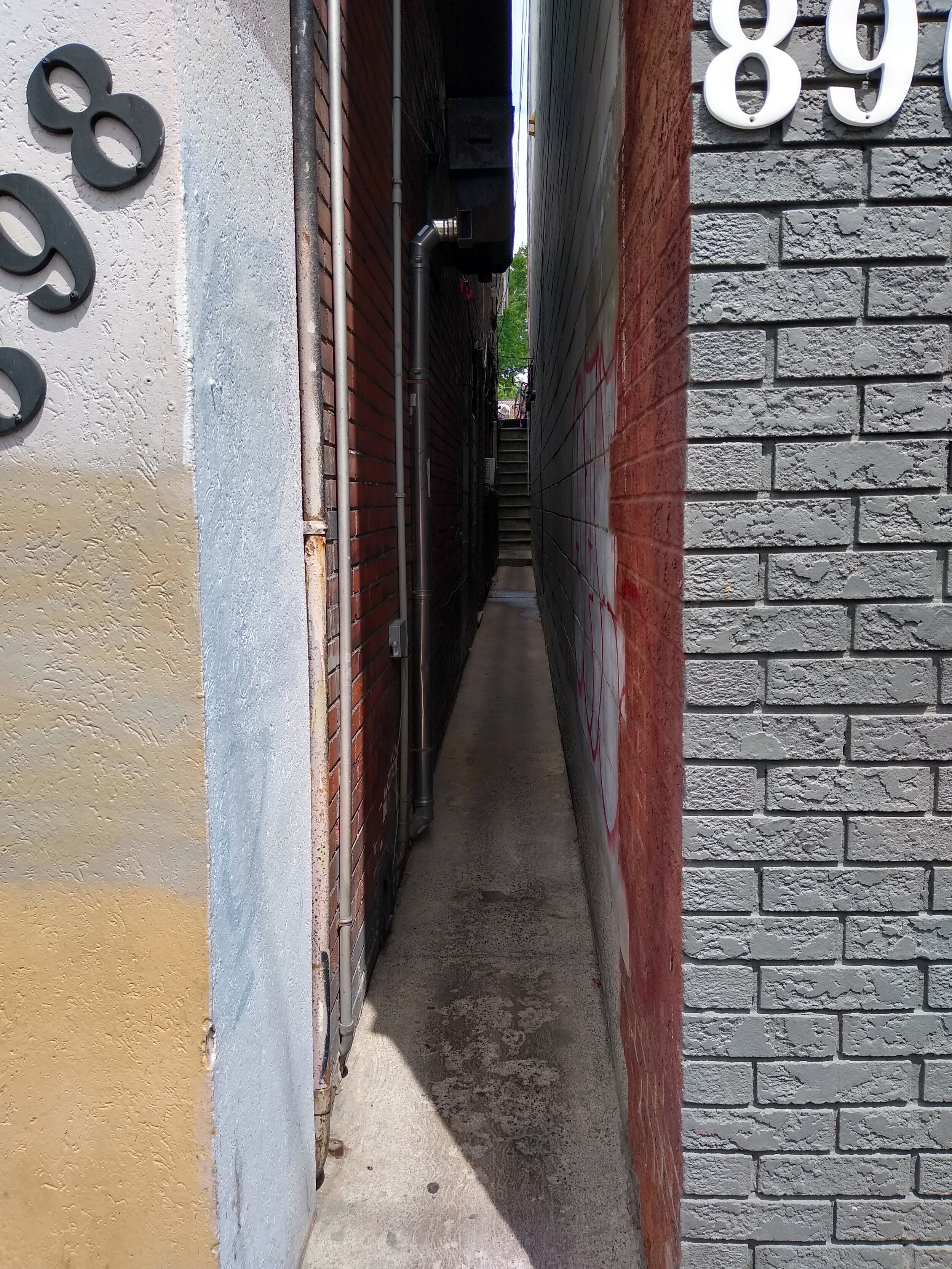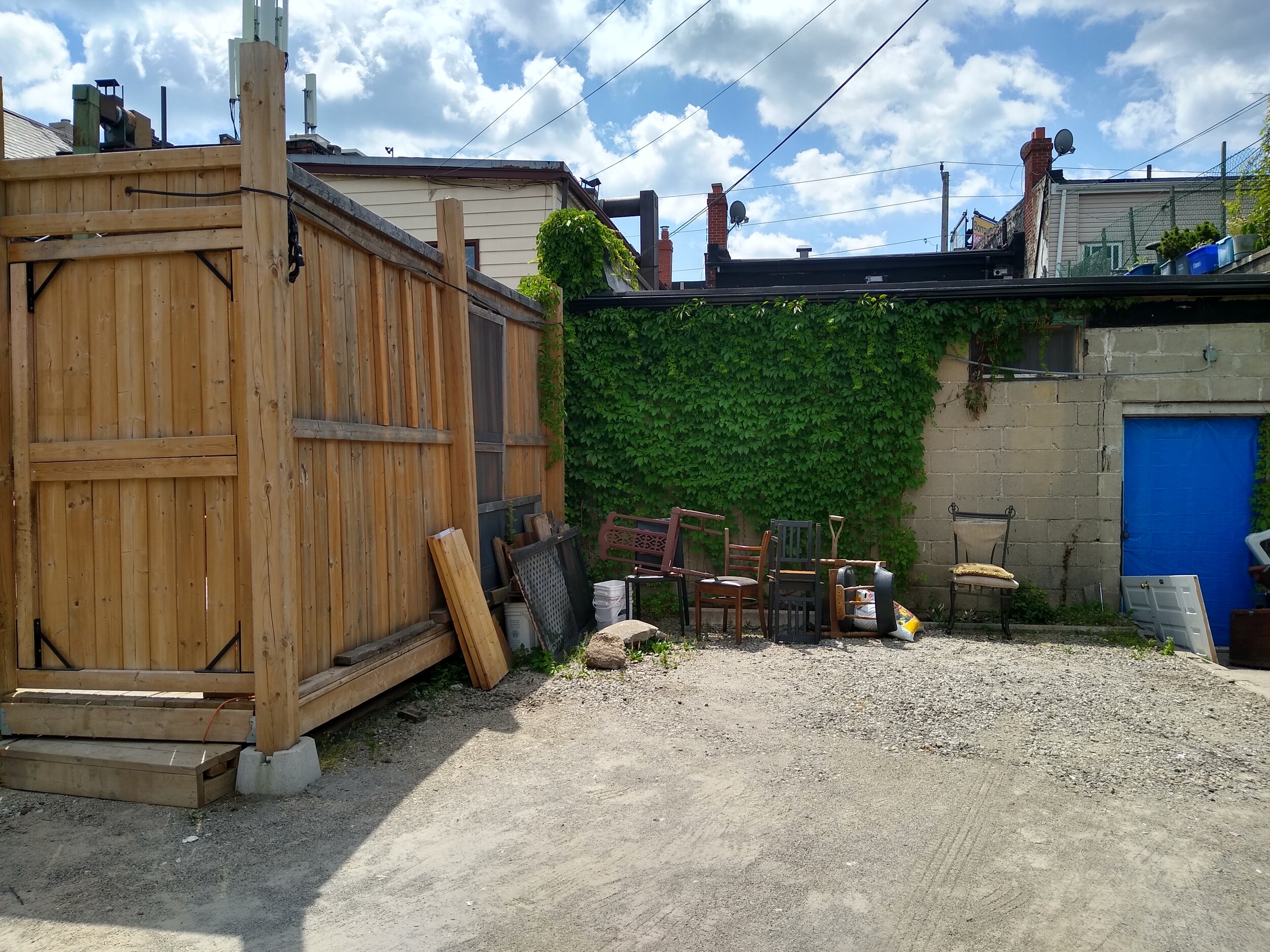Litter, dirt and unsanitary waste management conditions often mean that city laneways present an unappealing public face for local businesses. proper and regular maintenance of laneways is one of the most important components of transforming these spaces into vibrant places for the community.
The COVID-19 pandemic has brought into even sharper focus than usual the need for high-quality pedestrian and cycle routes in our busy downtown and midtown neighbourhoods. Laneways have the capacity to provide supplementary pathways that ease the pressure on sidewalks, enabling people to visit Main Street retail areas while maintaining physical distancing. But our back alleys are usually treated as purely utilitarian spaces, for servicing and not for people.
To address this challenge, we worked with the College Promenade BIA to develop a Toronto-specific set of best practices based on a study of current City policies, established practices, and inspiring precedents from around the world. Our new Clean Laneways resource guide helps businesses take the first, crucial steps in transforming their secondary frontages into appealing extensions of and introductions to their interior space.
neighbourhood
College Promenade
funder
College Promenade BIA
local partner
College Promenade BIA
BEST PRACTICES for #cleanlaneways
While laneway rights-of-way are swept once annually by Transportation Services, maintenance of the laneway frontages of private properties is the responsibility of property owners (as is the case with street frontages).
Below are some key best practices that can help you to maintain a clean, inviting laneway frontage. By adopting new routines that work for your business and property, you can maintain a positive image for your business and increase the appeal of your neighbourhood to customers and clients.
Reduce waste generation
Serve food in dishes rather than single-use containers for in-house (including patio) consumption
Work with your BIA to create a local food diversion and donation program to route stale-dated (but still good) food to local shelters or Second Harvest rather than to organics bins
Donate large, unwanted items that are used but serviceable such as furniture, racks and serveware to local charity shops for resale, or set them out for overnight salvage before waste collection day
Shield your waste
Install a waste storage enclosure in your laneway frontage area - secured, fenced, or fenced and roofed
Arrange timely pickup of large non-reusable waste items by a private waste management company
This applies even if, as a small business, you qualify for municipal pickup of smaller, everyday items
Coordinate procurement and scheduling of waste collection with your neighbours
Consider using the same private provider for coordinated and more frequent pickup - there may be opportunities for economies of scale
For food establishments - apply to have 7-day organics pickup by Solid Waste Management Services (per Toronto Municipal Code 841-4)
Signal ownership of your laneway frontage to deter littering and dumping, while providing a welcoming environment. Team up with your laneway neighbours for critical-mass impact.
Treat your laneway frontage as a public face of your business, just like your street frontage
Conduct a quick daily check and litter clean-up of your own laneway frontage area with a broom and a grabber
Install a small litter bin in your laneway frontage area (emptying this is easier than picking up scattered litter!)
Conduct weekly or biweekly weeding of your laneway frontage area during spring and summer
Consider spraying vinegar where you’ve pulled weeds to deter regrowth
Work with your BIA to hold regular laneway cleanups
Install downward-facing, shielded LED lighting on your building wall or fence
Consider using solar lighting - this is available from many commercial and landscape lighting suppliers
In the case of persistent unwanted dumping in your rear-lot space, consider also adding no-dumping signage and a security camera to identify culprits
Install and maintain plant pots and planters to demarcate and humanize the space
Refer to our How To Green Your Laneway Guide for tips
Refer to the CanPlant list of native species to select your species
Install a mural on your rear wall
Refer to our How To Add a Laneway Mural Guide for tips
Add non-service use(s) to put “eyes on the street”
Refer to two “cheat sheet” resources that The Laneway Project created for the Bloorcourt BIA: Private Outdoor Rear-Yard Patios and Private Outdoor Sales and Display Areas
Contact your Councillor (in coordination with your BIA) to advocate for the creation and enforcement of new municipal policies, practices and requirements regarding:
More frequent laneway right-of-way sweeping by Transportation Services
Waste storage standards for laneway frontages
The creation of block-scale shared waste storage areas as part of local high- and mid-rise developments
The creation of local waste collection hubs (waste compactors, recycling and organics processing facilities) in areas with high food-services density to reduce individual on-site storage
Project Partner
Funder







